Besides the usual well-known places such as Buckingham Palace and the Tower of London, London’s Blue Badge Tourist Guides are sometimes asked to take their clients to sites such as William Shakespeare’s Globe Theatre. This involves crossing the River Thames to Southwark where the theatre and its museum are located, about 250 yards from the site of the original Globe. It was opened twenty-one years ago in 1997 by Queen Elizabeth II but it was an American actor Sam Wanamaker who we have to thank for this recreation of William Shakespeare’s Globe Theatre near the heart of London.
William Shakespeare’s Globe Theatre could not have been built right in the centre of either the City of London or in nearby Westminster because the authorities disapproved of the actor’s companies and they were forced to perform away from respectable areas. At first, they built their theatre in the East End in the aptly named Curtain Road in Shoreditch but then, in 1599, they moved it virtually overnight to Southwark where it could be reached by crossing the Thames, either over London Bridge or, for wealthier patrons, by hiring a boatman to row you there directly.
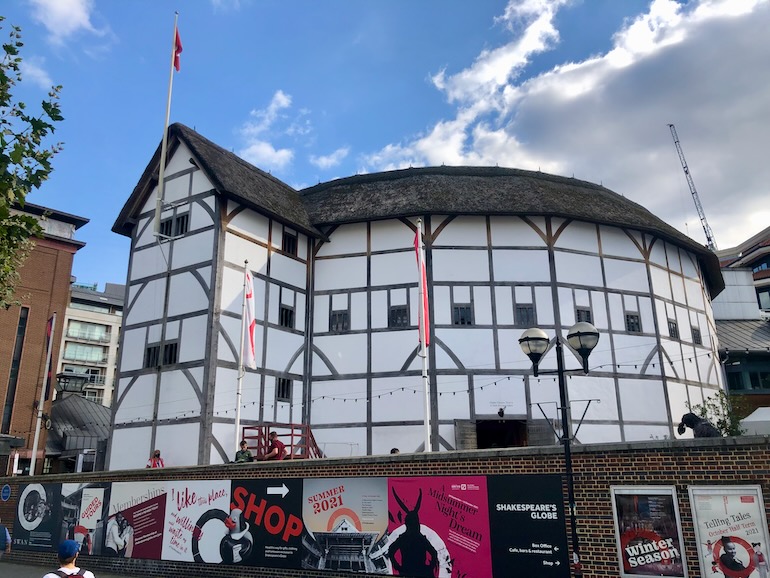 Shakespeare’s Globe – the Globe Theatre and the Sam Wanamaker Playhouse. Photo Credit: © Ursula Petula Barzey.
Shakespeare’s Globe – the Globe Theatre and the Sam Wanamaker Playhouse. Photo Credit: © Ursula Petula Barzey.
In William Shakespeare’s day, the Globe Theatre held an audience of 3,000, most of whom paid a penny to watch while standing. The new Globe Theatre in London is limited to around half that number but the standing tradition continues with around 300,000 modern-day ‘groundlings’ paying £5 (roughly the equivalent of a Tudor penny) to stand in any year. William Shakespeare’s plays can last for three hours or longer, so you needed to have a strong bladder to do this in his day, while today there is an interval in almost all performances. The William Shakespeare’s Globe Theatre in London attracts nearly a million people a year to its theatre and museum and accounts for around ten percent of the total London theatre audience. It generates £21 million pounds a year in income, which comes entirely through its commercial operation as it receives no subsidy from the government.
William Shakespeare’s Globe Theatre in London was heavily reliant on private benefactors when it was rebuilt and visitors can see the names of many of those who contributed towards its establishment in the floor as they enter the theatre on one of the regular tours, which are usually conducted by resting actors, writers and other ‘creatives’ as they like to be called nowadays. Most of those who contributed were persuaded to do so by Sam Wanamaker, an American actor who appeared in many Hollywood movies and television series as well as one stage as an actor and behind the scenes as a director. Many in the theatrical establishment in Britain were skeptical about the idea of rebuilding Shakespeare’s theatre for a contemporary audience so it took an American to get this particular show on the road. Sam Wanamaker, whose bust can be seen in the lobby of the new Globe, often performed in Britain and his daughter Zoe is a well-known actress who lives here and is often seen on the London stage.
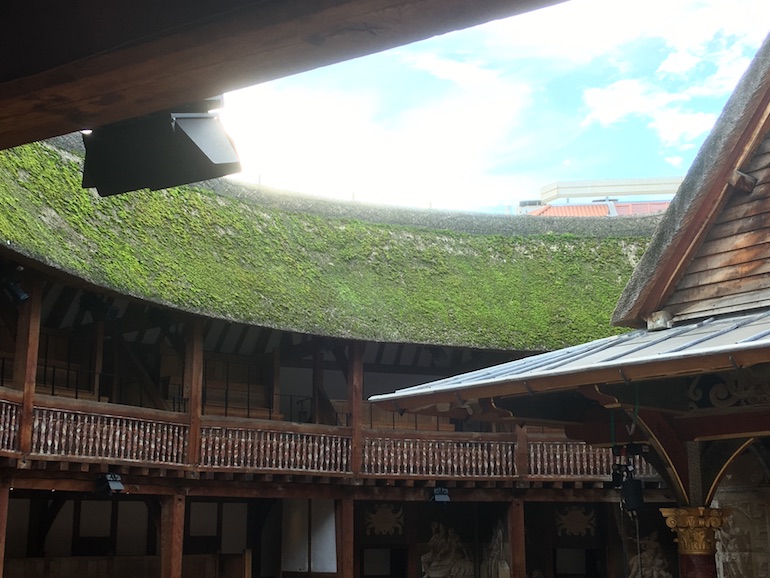 The roof of William Shakespeare’s Globe Theatre in London. Photo Credit: © Edwin Lerner.
The roof of William Shakespeare’s Globe Theatre in London. Photo Credit: © Edwin Lerner.
The rebuilt William Shakespeare’s Globe Theatre on the Southbank in London is a very faithful recreation of the original theatre and the architects and builders used material as much as possible from the original sources, even going back to the same forest for wood from oak trees. They gained the first permit for a thatched roof (now turning green) on a building in central London since the Great Fire of 1666. The thatch had to be fireproofed before it was authorised as the original Globe was burnt down when a cannon exploded in a production of Shakespeare’s final play Henry the Eighth in 1613. The only casualty of this misfortune was a pair of trousers which were set alight – but a handy bottle of beer was used to put out the flames before any further harm came to the wearer!
William Shakespeare, who had moved back to live with his family in Stratford, died in 1616 and is buried there. A generation later the Puritans came to power at the time of a short-lived English republic under Oliver Cromwell and one of the first things they did was to close the theatres. The original Globe was demolished in 1642 and, when the theatres were reopened at the time of the restoration of the monarchy in 1660, things had changed. Women were allowed to appear on stage: in Shakespeare’s day, female parts were taken by boys. Some traditions remained unchanged, however. In Tudor times the audience paid their pennies – or more if they wanted to sit down – to see the plays and the takings were kept in a box which was kept secure in the ‘box office’ where we still buy our tickets.
 Panorama view of William Shakespeare’s Globe Theatre. Photo Credit: © Maschinenjunge via Wikimedia Commons.
Panorama view of William Shakespeare’s Globe Theatre. Photo Credit: © Maschinenjunge via Wikimedia Commons.
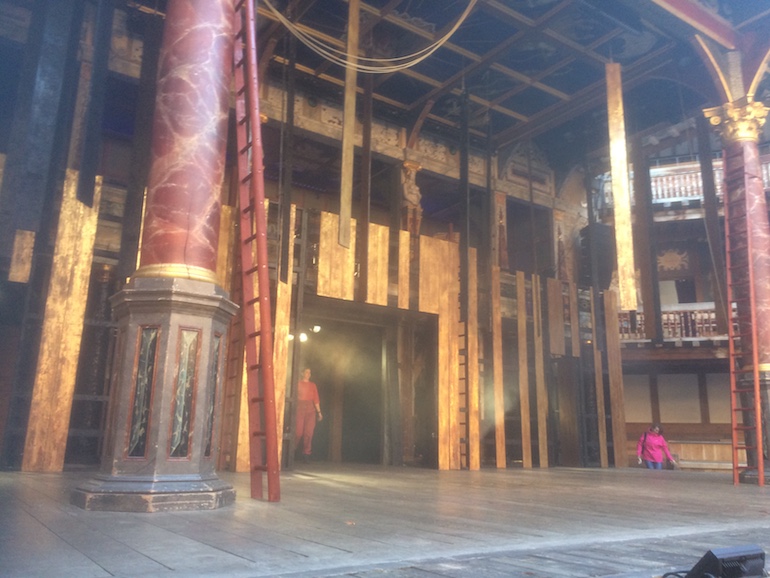 Stage of William Shakespeare’s Globe Theatre in London. Photo Credit: © Edwin Lerner.
Stage of William Shakespeare’s Globe Theatre in London. Photo Credit: © Edwin Lerner.



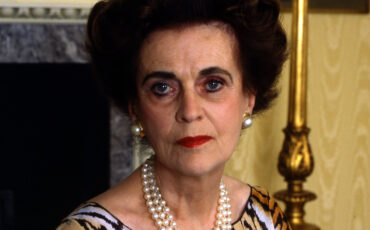
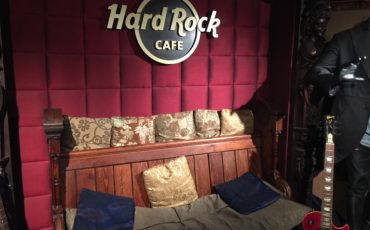


Leave a Reply